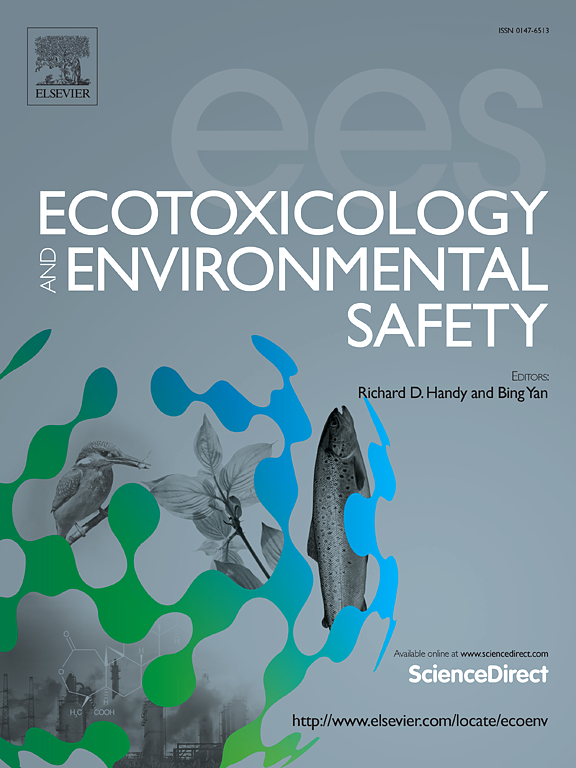Analysis of toxicity and mechanisms of busulfan in non-obstructive azoospermia: A genomic and toxicological approach integrating molecular docking, single-cell sequencing, and experimentation in vivo
IF 6.2
2区 环境科学与生态学
Q1 ENVIRONMENTAL SCIENCES
引用次数: 0
Abstract
Environmental pollutants, including chemical contaminants, heavy metals, and pesticides, have been linked to adverse effects on male reproductive health, particularly sperm quality. Non-obstructive azoospermia (NOA) is a severe form of male infertility caused by intrinsic testicular dysfunction, leading to a complete absence of sperm in the ejaculate. Busulfan, an alkylating chemotherapeutic agent widely used to treat chronic myelogenous leukemia, is known to induce NOA through its toxic effects on spermatogonial stem cells (SSCs). This study aimed to identify key molecular targets and pathways disrupted by busulfan in the testicular environment. By integrating molecular docking, single-cell RNA sequencing, and in vivo experimentation, the study identified POLE and LRAT as critical proteins. These proteins were shown to interact strongly with busulfan, leading to genomic instability and increased germ cell apoptosis during spermatogenesis. Additionally, the immune landscape of NOA-affected testes revealed significant changes in immune cell infiltration, potentially worsening the condition. These findings offer new insights into the mechanisms of busulfan-induced NOA and suggest potential therapeutic targets for preserving male fertility in chemotherapy patients. This research advances the understanding of chemotherapy-induced reproductive toxicity and emphasizes the need for strategies to reduce its negative effects on fertility.
求助全文
约1分钟内获得全文
求助全文
来源期刊
CiteScore
12.10
自引率
5.90%
发文量
1234
审稿时长
88 days
期刊介绍:
Ecotoxicology and Environmental Safety is a multi-disciplinary journal that focuses on understanding the exposure and effects of environmental contamination on organisms including human health. The scope of the journal covers three main themes. The topics within these themes, indicated below, include (but are not limited to) the following: Ecotoxicology、Environmental Chemistry、Environmental Safety etc.

 求助内容:
求助内容: 应助结果提醒方式:
应助结果提醒方式:


